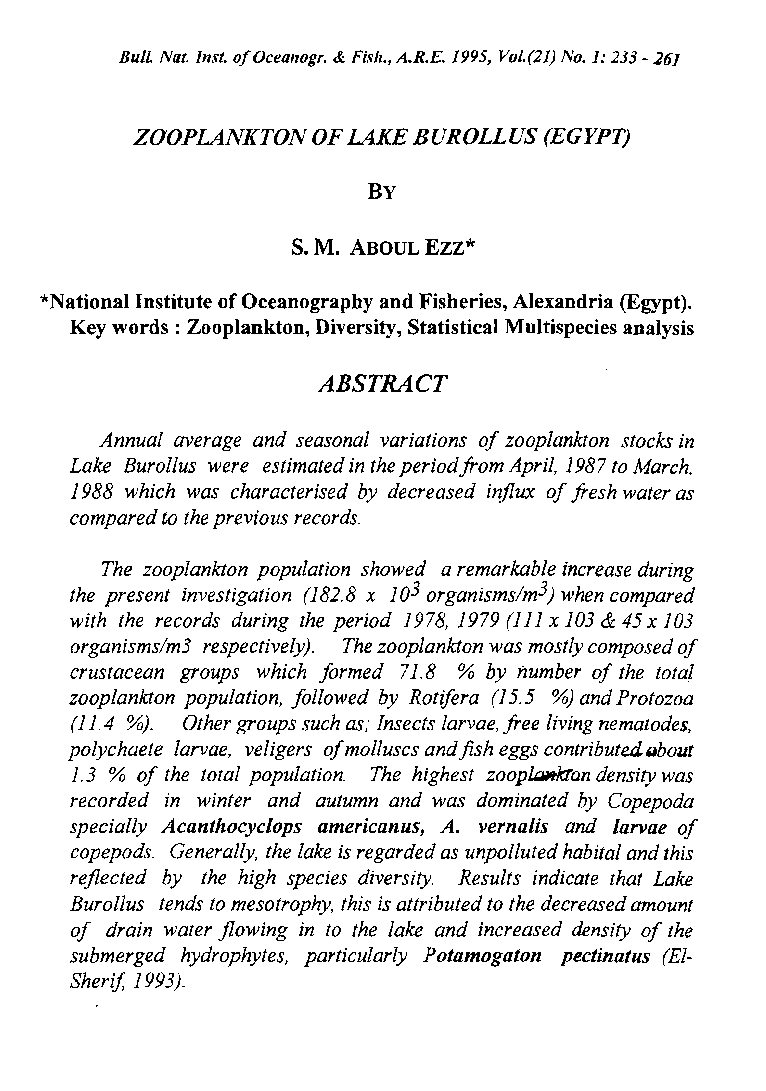Categories
vol-21ZOOPLANKTON OF LAKE BUROLLUS (EGYPT)
By
s. M. ABOUL EZz*
*National Institute of Oceanography and Fisheries, Alexandria (Egypt).
Key words: Zooplankton, Diversity, Statistical Multispecies analysis
ABSTRACT
Annual average and seasonal variations of zooplankton stocks in
Lake Burollus were estimated in the periodfrom April, 1987 to March,
1988 which was characterised by decreased influx of fresh water as
compared to the previous records.
The zooplankton population showed a remarkable increase during
the present investigation (182.8 x 103 organisms/m3) when compared
with the records during the period 1978, 1979 (111 x 103 & 45 x 103
organisms/m3 respectively). The zooplankton was mostly composed of
crustacean groups which formed 71.8 % by number of the total
zooplankton population, followed by Rotifera (15.5 %) and Protozoa
(11.4 %). Other groups such as; Insects larvae, free living nematodes,
polychaete larvae, veligers ofmolluscs andfish eggs contributed Qbout
1. 3 % of the total population. The highest zoop/.Qlltkran density was
recorded in winter and autumn and was dominated by Copepoda
specially Aeanthocyelops americanus, A. vernalis and larvae of
copepods. Generally, the lake is regarded as unpolluted habital and this
reflected by the high species diversity. Results indicate that Lake
Burollus tends to mesotrophy, this is attributed to the decreased amount
of drain water flowing in to the lake and increased density of the
submerged hydrophytes, particularly Potamogaton peetinatus (£1
Sherif, 1993).







